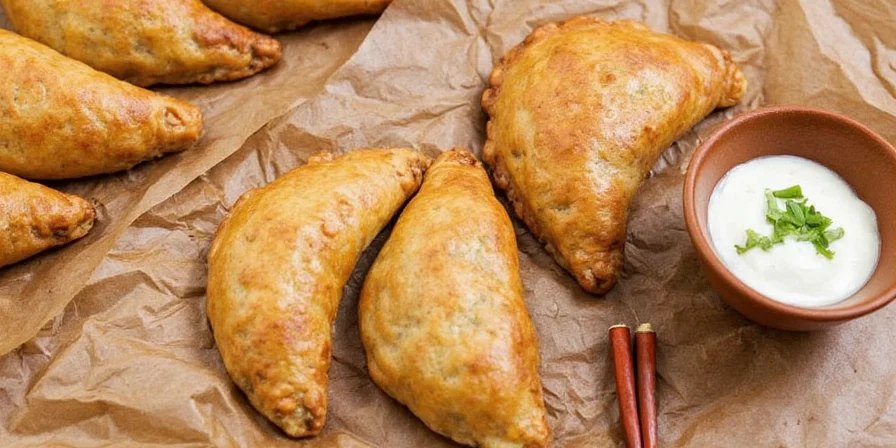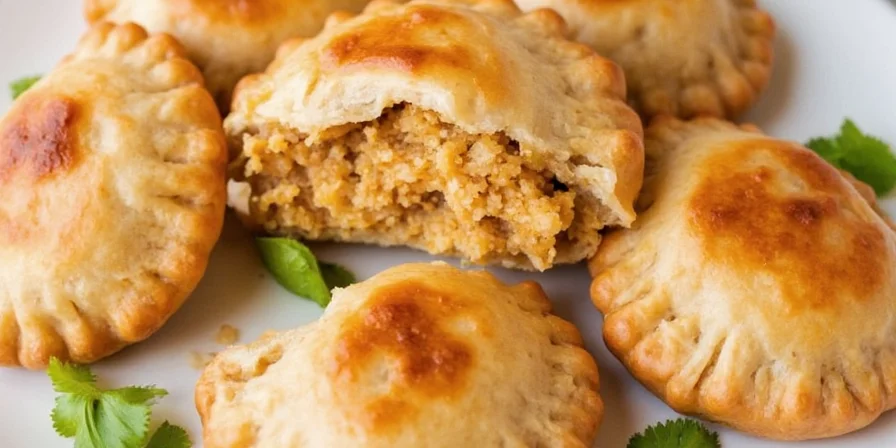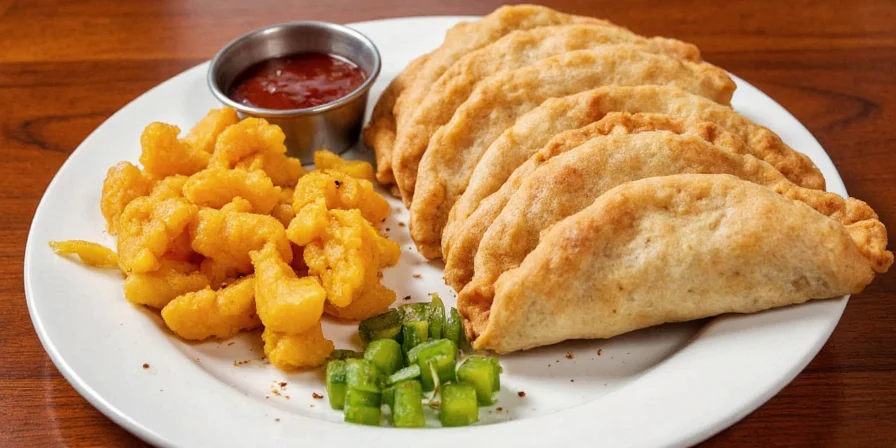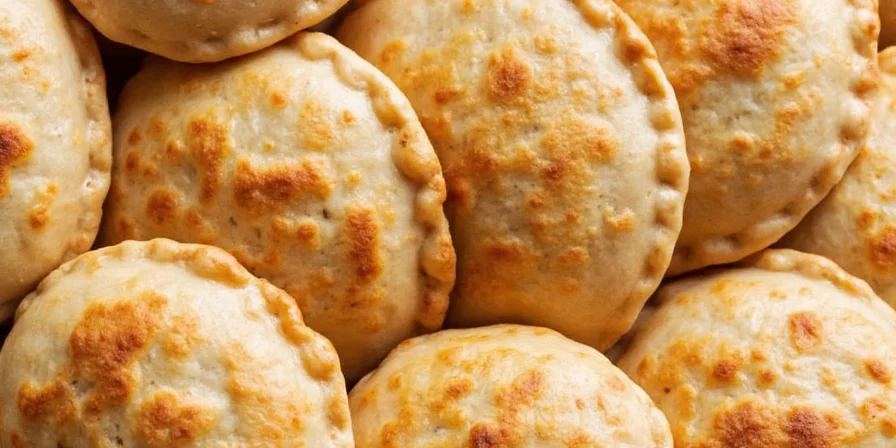Spice, Crisp, and Culture: Exploring the Global Spice Traditions Behind Puerto Rico Empanadas
If you've ever bitten into a golden, flaky Puerto Rico empanada, you know that it's more than just a snack—it's a flavor-packed passport to the Caribbean. But what makes this humble handheld so unforgettable? Spoiler alert: it's not just the crispy dough or the juicy filling. It's the spices. And in today’s blog post, we're diving deep into the global spice traditions woven into every bite of a Puerto Rican empanada.
Table of Contents
- What Is a Puerto Rico Empanada?
- Spice Traditions Around the World (and How They Land in Your Empanada)
- The Essential Spice Lineup for Authentic Empanadas
- Tips & Tricks for Making Perfect Puerto Rico Empanadas at Home
- Global Spice Traditions: How Empanadas Reflect a Flavorful Fusion
- Conclusion: Spice Up Your Life with Every Bite

What Is a Puerto Rico Empanada?
At its core, a Puerto Rico empanada is a turnover—typically made from cornmeal-based dough wrapped around a savory filling, then either baked or fried until golden and crisp. Unlike their Spanish or Latin American cousins, which can vary widely in shape and stuffing, Puerto Rican empanadas are known for their distinct half-moon shape, deep-fried crunch, and bold seasoning.
Traditionally filled with spiced beef (picadillo), chicken, cheese, seafood, or even dessert fillings like guava, these little flavor bombs reflect both indigenous Taino roots and Spanish colonial influences. But it's the spices—oh, the spices—that truly set them apart.

Spice Traditions Around the World (and How They Land in Your Empanada)
Let’s take a quick world tour before we get back to the frying pan. Spices have historically traveled vast distances—whether by land, sea, or conquest—and Puerto Rico’s culinary profile reflects centuries of global spice exchange:
- Cumin (Middle Eastern/North African origin) found its way to the New World via Spanish colonizers.
- Black pepper came all the way from India through European trade routes.
- Achiote (annatto), however, is deeply rooted in pre-Columbian Mesoamerica and the Caribbean, where indigenous people used it as both a spice and dye.
In essence, each spice inside your empanada tells a story—of migration, colonization, adaptation, and delicious fusion.
The Essential Spice Lineup for Authentic Empanadas
To nail the authentic taste of Puerto Rico empanadas, you need more than just meat and masa harina. Here’s your spice dream team:
| Spice | Origin | Role in Empanada | Taste Profile |
|---|---|---|---|
| Sazon Goya (with culantro) | Puerto Rico | Signature seasoning blend; enhances meat and dough | Herbaceous, citrusy, earthy |
| Achiote | Mesoamerica | Provides color and subtle peppery flavor | Earthy, nutty, slightly peppery |
| Adobo Seasoning | Puerto Rico | Salt-forward base seasoning | Savory, garlicky, umami-rich |
| Cumin | Middle East / Mediterranean | Depth and warmth in picadillo filling | Bitter, spicy, warming |
| Oregano | Mediterranean | Floral, aromatic finish | Herbal, floral, earthy |

Tips & Tricks for Making Perfect Puerto Rico Empanadas at Home
Ready to roll up your sleeves and fry up some empanadas? Here’s how to avoid kitchen disasters and make your batch shine:
- Filling Prep First: Cook and cool your filling completely before assembling. This prevents steam from making your dough soggy.
- Dough Discipline: Use masa harina (corn flour) mixed with butter or lard for that classic texture. Chill it before shaping to help maintain structure during frying.
- The Sealing Secret: Brush the edges of the dough with beaten egg wash before folding. It acts as the perfect edible glue!
- Frying Fat Fact: Deep-fry in oil with a high smoke point (like peanut or avocado oil). Maintain a consistent temperature around 350°F (175°C).
- Spice Balance Tip: Taste your filling before sealing. Adjust salt, cumin, and sazón to suit your palate.
Global Spice Traditions: How Empanadas Reflect a Flavorful Fusion
While empanadas are now a staple of Puerto Rican street food, they’re part of a much larger culinary family stretching across continents. Let’s compare!
| Region | Empanada Style | Key Spices | Global Spice Roots |
|---|---|---|---|
| Puerto Rico | Crispy cornmeal shell, savory fillings | Sazón, adobo, cumin, oregano | Mix of Caribbean, Spanish, Middle Eastern |
| Argentina | Soft wheat pastry, ground beef filling | Paprika, black pepper, nutmeg | European influence, especially Italian |
| Philippines | Sweet or savory, often with raisins or ham | Cinnamon, sugar, vanilla | Spanish colonization meets local tropical flavors |
| India | Samosa-like, deep-fried pastry | Coriander, cumin, turmeric | Deeply rooted in Ayurvedic and trade history |
| Morocco | Mini pastries stuffed with lamb or vegetables | Cumin, cinnamon, ginger | North African spice blends passed down generations |

This comparison shows that while the concept of a savory turnover may be universal, the spices tell vastly different stories. In the case of Puerto Rico empanadas, those stories are layered, blended, and fried to perfection.
Conclusion: Spice Up Your Life with Every Bite
Puerto Rico empanadas aren’t just delicious—they're a celebration of spice, tradition, and cross-cultural connection. Whether you're biting into one fresh off the fryer or crafting your own at home, remember that every spice has a story, and every fold in the dough carries centuries of heritage.
So next time you're reaching for that bag of sazón or grinding your own achiote paste, know that you're not just cooking—you're participating in a global spice tradition that spans oceans, borders, and generations.

And hey, if you burn a few in the process... well, that’s just part of the journey. Happy frying!











 浙公网安备
33010002000092号
浙公网安备
33010002000092号 浙B2-20120091-4
浙B2-20120091-4